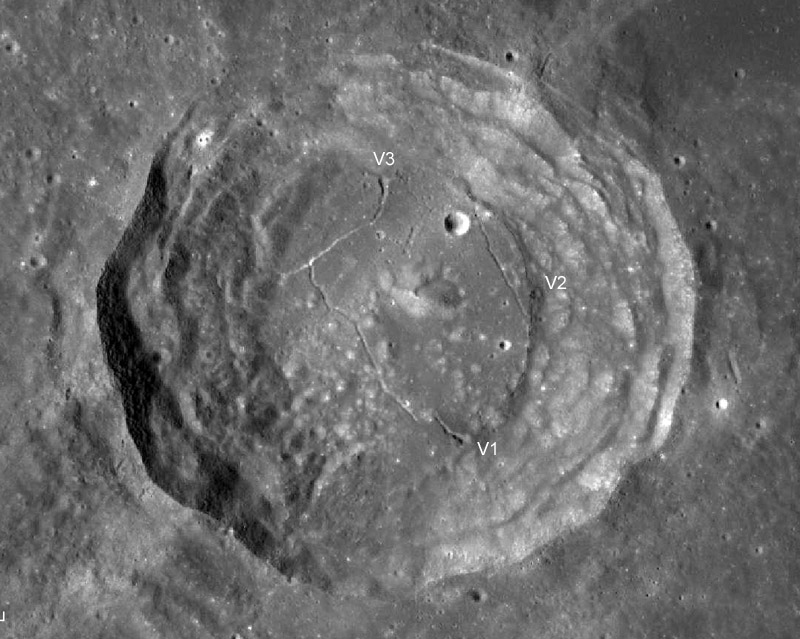August 30, 2022
Tilted, Fractured And Ashed
Originally published October 8, 2012

Lunar Reconnaissance Orbiter image from QuickMap (ASU, NASA)
I've never looked carefully at Cardanus until today. The crater is along the western shore of Oceanus Procellarum, famous mostly for being the southern of two craters joined by a crater chain that is probably unrelated to either of them. As this LRO WAC image shows, three significant rilles cut the floor, making it a floor-fractured crater. If you look at the high Sun OP2C1 M-Cubed image on the QuickMap site you will see two dark deposits. They are pyroclastic units associated with the vents labelled V1 and V2. V3 is a third ashless vent that apparently has been partially covered by talus that slid down the crater wall. Between V1 and V2, along the edge of the floor, is an odd curved series of hills that seem to be cut by a fracture. That is how it looks at this scale, but zooming in to the higher resolution NAC images shows it as a line of bright boulders, and the altimetry depicts it as a rounded ridge, lower by 10s of meters on the east side. Because the two vents are along/near this curved ridge it must also be a fault that provided a conduit for gas-rich magma to reach the surface. The crater's somewhat flat floor, with the fractured edge looks like it may have tilted, like Posidonius or Daniell. With the fracturing on the east, that side would be expected to have risen, but the west side seems to be a few hundred meter higher. Perhaps the uplift of a floor-fractured crater is more complex than simple models.
Chuck Wood
PS - Notice the brightness from bottom left to upper right? That is a ray from Glushko.
Related Links
Rükl plate 28
Yesterday's LPOD: Stunning Serenitatis
Tomorrow's LPOD: Beyond the Rim
COMMENTS?
Register, Log in, and join in the comments.



